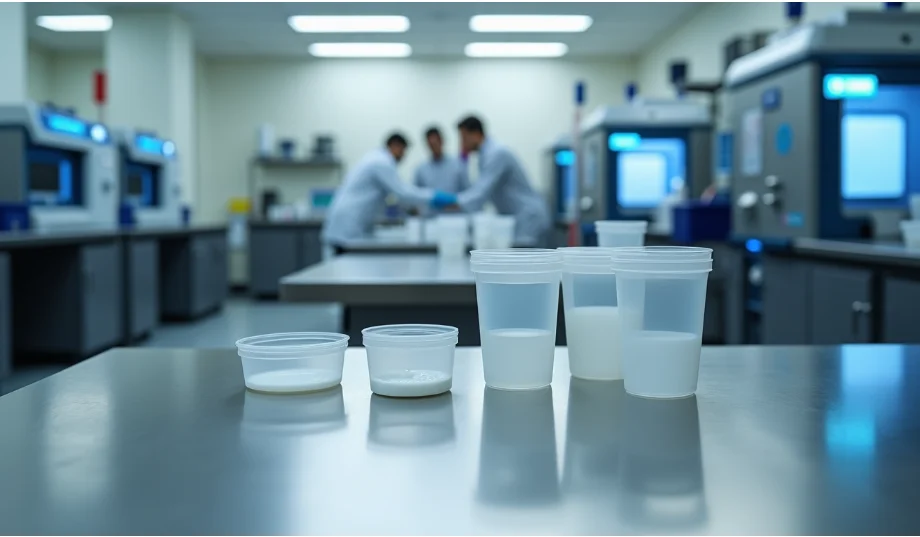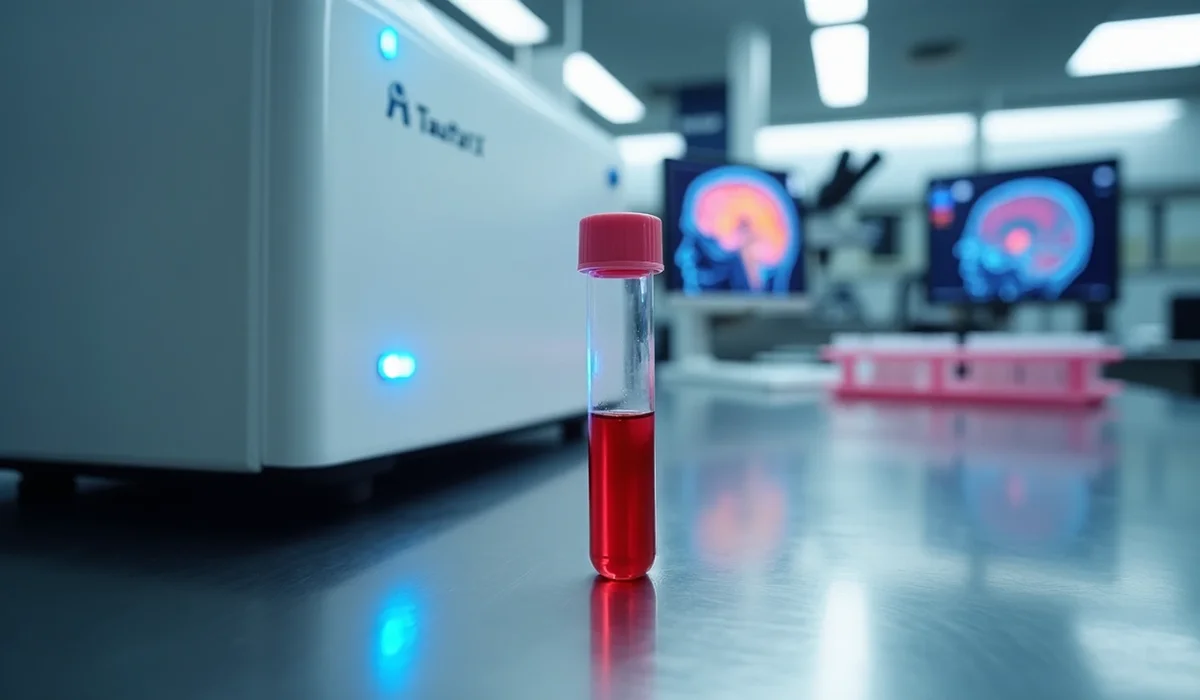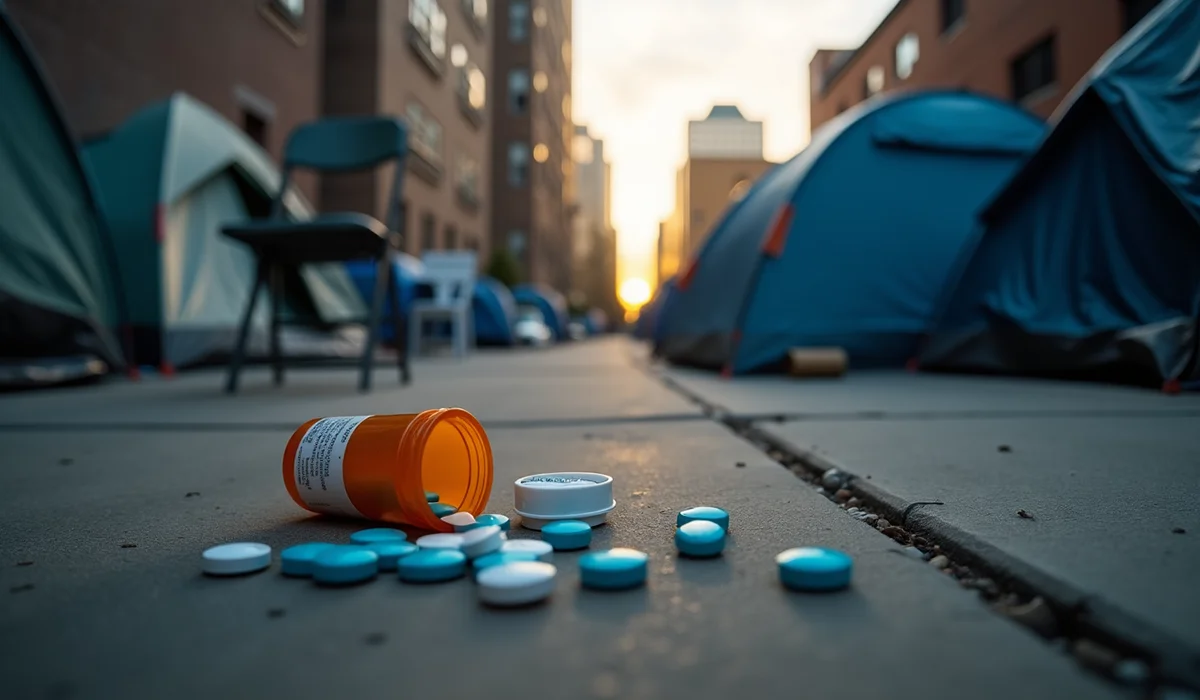The Department of Transportation (DOT) has implemented its most important drug testing policy change in decades. A major transformation is happening as the DOT adds oral fluid testing among traditional urine testing methods.
Transportation industry employers and employees face a new reality with these DOT drug testing requirements. The 2024 addition of oral fluid testing creates fresh opportunities and challenges. This piece explores the changes, implementation schedules, collection site protocols and employer duties that shape this milestone update to DOT’s drug testing program.
Key Changes to DOT Drug Testing
The U.S. Department of Transportation’s move to include oral fluid testing alongside traditional urine-based testing marks a fundamental change in workplace drug testing. This revolutionary force reshapes our industry’s approach to drug screening.
Overview of New Oral Fluid Testing Option
DOT drug testing requirements now let employers choose between oral fluid and urine testing [1]. Oral fluid testing comes with several key advantages:
- Better detection of recent drug use, with a 24-hour window for marijuana compared to urine testing’s 3-67 day window [2]
- Lower chances of specimen tampering through direct observation
- Testing can happen at more locations with less time away from work
- Quick results for reasonable suspicion and post-accident testing scenarios
Timeline for Implementation
Here’s how the changes will roll out:
| Milestone | Date |
| Original Rule Effective Date | June 1, 2023 [3] |
| Final Rule Implementation | August 5, 2024 [4] |
| California Law Changes | Throughout 2024 [2] |
It’s worth mentioning that oral fluid testing can’t begin until the Department of Health and Human Services (HHS) certifies at least two laboratories [5]. Right now, no labs have this certification [6].
Impact on Existing Programs
Current drug testing programs face major changes. The new requirements cover all safety-sensitive transportation positions. All but one of these positions will use the new testing – Federal Railroad Administration post-accident testing will stick to urine testing [3].
The changes bring new procedures for:
- Privacy rules that limit testing observation to authorized personnel [4]
- New ways to document specimen volume checks
- Updated qualifications for collection monitors [7]
These changes help curb employee cheating on urine drug tests and provide a less intrusive method [3]. Employers will find these changes especially helpful when conducting reasonable suspicion and post-accident testing, as they can detect recent substance use more accurately [2].
Collection Site Requirements
The new DOT drug testing protocols require collection sites to meet detailed requirements. These updates aim to ensure testing integrity and compliance.
Privacy During Testing
Collection sites must follow strict privacy standards during specimen collection. Permanent and temporary facilities need to implement several key measures:
- Areas with restricted access that allow only authorized personnel and donors [8]
- Temporary storage areas that keep specimens secure until laboratory transfer [9]
- Clean surfaces dedicated to specimen handling and paperwork [9]
- Hand-washing facilities or alternatives that staff can directly observe [8]
- Collection supplies protected from unauthorized access [8]
Documentation Procedures
Documentation requirements at collection sites now follow stricter protocols. The Federal Drug Testing Custody and Control Form (CCF) remains the cornerstone of this process [10]. Current documentation protocols include:
| Record Type | Retention Period |
| Collection Records | Minimum 2 years [9] |
| Collector Training Records | Current documentation [11] |
| Federal CCF Copies | 6 months (before electronic conversion) [9] |
Quality Control Measures
The 5-year old quality control measures help maintain testing integrity. Staff must check donor identity through government-issued photo ID before any collection begins [8]. Collection staff must also:
- Subscribe to the ODAPC list-serve to receive procedural updates [11]
- Complete refresher training every five years [8]
- Show proficiency with specific collection devices [12]
- Check that testing supplies haven’t expired [12]
Quality control protocols prohibit collectors from handling multiple collections at once. Each collector must focus on one donor at a time [8]. Strict controls over personally identifiable information (PII) limit access to trained essential personnel [9].
These requirements show our steadfast dedication to maintaining high standards in DOT drug testing procedures. They protect employee privacy and ensure reliable results.
Qualification Standards
The shift to oral fluid testing in our industry brings complete updates to collector qualification standards. Strict requirements now ensure testing accuracy and compliance at collection sites of all types.
Mock Collection Monitor Requirements
The core team has set clear requirements for mock collection monitors. These professionals must show their expertise through:
- One year of regular DOT drug test collection experience
- One year of collector training experience
- Successful completion of a “train the trainer” course [13]
A temporary waiver of the one-year experience requirement for monitors exists during the original implementation phase. This waiver will expire one year after the first HHS laboratory certification [13].
Training Program Updates
The updated qualification training program covers detailed instruction in several vital areas. Collectors must prove their skills in:
| Training | Component Requirement |
| Device Operation | Proficiency with specific collection devices |
| Documentation | Proper CCF completion and transmission |
| Problem Resolution | Handling situations like “dry mouth” and tampering |
| Collection Integrity | Privacy and security protocols |
Collectors must complete five consecutive error-free mock collections for each device they plan to use [11]. Qualified professionals monitor these demonstrations and provide immediate feedback [11].
Certification Process
The certification process upholds high standards through several essential requirements:
- Original Qualification: Training components must be completed before collectors start their duties [14].
- Ongoing Certification: Refresher training becomes necessary every five years to maintain qualification status [11].
- Error Correction: Mistakes that lead to canceled tests require mandatory error correction training within 30 days [14].
Qualification as a urine collector does not automatically qualify someone to collect oral fluid [13]. Each collector’s documentation of qualifications must stay current and be available to DOT agency representatives, employers, and C/TPAs [14].
Quality assurance requires collectors to check device expiration dates and show this to the employee before collection [12]. Collections using expired devices lead to automatic specimen rejection, and collectors must complete error correction training [12].
Laboratory Certification
Laboratory certification serves as the life-blood of our testing program’s integrity while implementing new DOT drug testing requirements. The program has complete standards that will give accurate and reliable results in certified facilities of all types.
HHS Certification Requirements
The Department of Health and Human Services (HHS) strictly oversees laboratory certification. Laboratories must participate in the National Laboratory Certification Program (NLCP) to conduct DOT drug testing [15]. The certification framework has:
| Requirement | Type Specification |
| Location | U.S.-based or DOT-approved foreign facilities |
| Certification | HHS certification under NLCP |
| Reporting | Bi-annual DOT data submission |
| Compliance | 49 CFR Part 40 and HHS requirements |
A minimum of two HHS-certified laboratories must operate before employers can implement oral fluid testing [12]. This setup will give adequate capacity and backup testing capabilities.
Device Approval Process
The device approval process upholds strict standards for testing equipment. Requirements state:
- FDA-cleared collection devices with built-in volume indicators
- Minimum collection capacity of 1 mL undiluted oral fluid
- Split specimen capability for both primary and backup testing [16]
Device selection challenges exist during this transition period. Training on collection devices before HHS certification is allowed, but risks exist. Devices used in training might not receive final HHS approval. Collectors take full responsibility for outcomes from using unapproved devices [13].
Testing Facility Standards
Testing facilities must meet complete standards that line up with both DOT and HHS requirements. Laboratories need to maintain:
- Quality Control Measures
- Regular proficiency testing
- Strict chain of custody documentation
- Specimen validity testing protocols
- Documentation Systems
- Detailed record-keeping of all testing procedures
- Chain of custody form handling
- Accurate expiration date verification [12]
Laboratories must categorize and report data twice yearly. Reports break down results by DOT operating administration (FRA, FTA, FAA, PHMSA, FMCSA), test reason, and specimen type [12]. This detailed reporting helps maintain oversight and spot trends in testing outcomes.
Specific protocols exist for specimen handling rejection criteria. Laboratories must check Bottles A and B to determine the correct date if collectors miss or incorrectly enter expiration dates [12]. This careful attention protects the testing program’s integrity.
Employer Responsibilities
DOT’s new drug testing requirements place crucial responsibilities on employers to run compliant testing programs. Recent changes affect how we handle drug testing for all transportation sectors.
Policy Updates Required
Employers need to add several vital policy updates to line up with these requirements. Here’s what we need to set up:
- Standing orders with collection sites that specify testing priorities [12]
- Clear protocols to handle insufficient specimens
- Updated procedures for urine and oral fluid testing methods
- Clear guidelines to select test types based on circumstances [12]
Our Designated Employer Representatives (DERs) must stay available 24/7 to handle collection site issues and make key decisions about testing methods [12]. This round-the-clock availability matters more now as we direct different testing options.
Staff Training Requirements
Our supervisors and staff need detailed training. The programs must cover:
| Training Component | Requirement Details |
| Supervisor Training | Detection of drug use symptoms [17] |
| Collection Site Communication | Direct contact protocols [12] |
| Problem Collection Procedures | Response to insufficient specimens [12] |
| Documentation Requirements | CCF completion and verification [12] |
CDL driver supervisors need specific training to spot signs of driver impairment [17]. This approach helps us keep safety standards high while following new testing rules.
Documentation Systems
A resilient documentation system helps us manage testing programs well. We need:
- Testing Records Management
- Clearinghouse Requirements
Our records must capture details of all testing situations:
- Pre-employment screening
- Random testing programs
- Post-accident testing
- Reasonable suspicion testing
- Return-to-duty testing
- Follow-up testing [17]
Follow-up testing records must show at least six directly observed tests in the first 12 months [17]. These records need separate storage from personnel files to protect privacy and maintain compliance.
Employers who run their own random testing programs must create selection pools with two or more covered employees if they’re not part of a larger consortium [17]. This rule creates fair and unbiased selection processes.
Starting November 18, 2024, commercial driving privileges will face automatic suspension when drivers get prohibited status in the Drug and Alcohol Clearinghouse [18]. This change makes timely and accurate reporting of test results essential.
Conclusion
DOT’s new drug testing requirements bring a fundamental change to workplace safety in our industry. Oral fluid testing proves advantageous by detecting recent drug use better and lowering the risks of specimen tampering. The success of this program relies on several crucial steps, especially when you have HHS-certified testing laboratories.
Testing facilities must update their setup and processes while they protect privacy and follow documentation guidelines. Collectors need detailed training and certification to show they can handle new testing equipment and methods properly. Companies must take on more duties – from updating policies to improving staff training and keeping better records.
These changes will make workplace safety programs stronger in transportation sectors of all sizes. The option to choose between two testing methods gives more flexibility and better accuracy in finding substance use. Companies need to focus on qualification standards, lab certifications, and compliance requirements carefully. Our industry can now protect public safety better while respecting worker privacy and keeping tests reliable.
References
[1] – https://disa.com/news/why-the-dot-approved-oral-fluid-testing-but-you-cant-use-it-yet
[2] – https://stat-technologies.com/new-drug-testing-regulations-coming/
[3] – https://orasure.com/documents/whats-the-buzz/dot_edition/2023 Spring_DOT oral fluid final rule FAQs.pdf
[4] – https://www.michlaborlaw.com/final-revised-procedures-workplace-oral-drug-testing
[5] – https://www.labcorp.com/understanding-advancements-employee-drug-testing-dot-approves-oral-fluid
[6] – https://www.safetyandhealthmagazine.com/articles/25761-dot-oral-fluid-drug-testing-in-a-holding-pattern
[7] – https://www.transportation.gov/ODAPC/Notice_Summary_Nov_2024
[8] – https://www.samhsa.gov/sites/default/files/2022-oral-fluid-collection-site-manual.pdf
[9] – https://www.samhsa.gov/sites/default/files/oral-fluid-collection-handbook-2024.pdf
[10] – https://www.transportation.gov/odapc/collectors
[11] – https://www.transportation.gov/odapc/part40/40-35
[12] – https://www.transportation.gov/odapc/Notice_Summary_May_2023
[13] – https://disa.com/news/part-40-final-rule-dot-summary-of-changes-and-what-it-means-for-employers-and-collectors
[14] – https://dotoralfluidcollectortraining.com/
[15] – https://www.transportation.gov/odapc/labs
[16] – https://orasure.com/documents/whats-the-buzz/dot_edition/Whats the Buzz_2023 Spring_DOT Edition.pdf
[17] – https://www.fmcsa.dot.gov/regulations/drug-alcohol-testing/what-tests-are-required-and-when-does-testing-occur
[18] – https://iprospectcheck.com/dot-drug-test/





